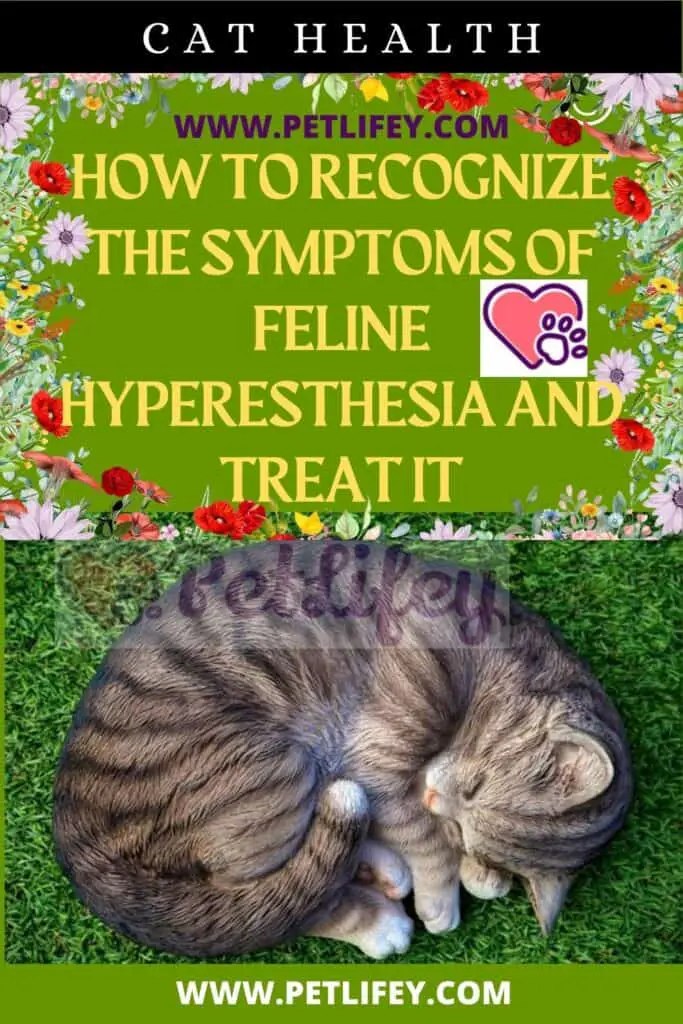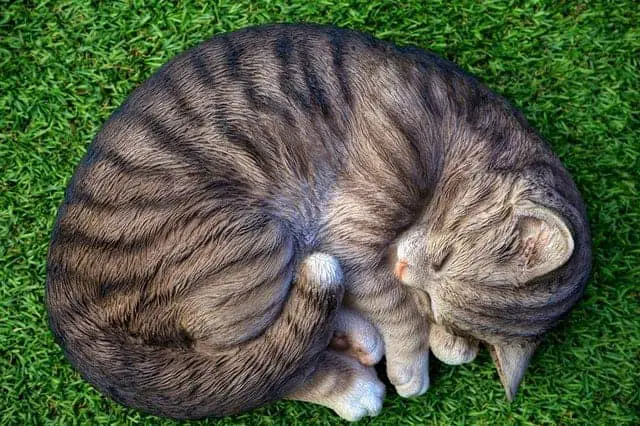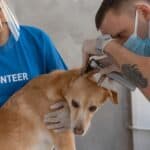
How to recognize the symptoms of feline hyperesthesia? And how to cure this disease which is so serious but fortunately also quite rare?
Feline hyperesthesia or also called rolling skin disease is a very rare disease that affects the neuromuscular system of the cat, for this reason the feline feels like being stung by something that is under its skin or on the his back. In this condition, the cat tries to free itself in all ways, fidgeting and sometimes biting itself on the body.
The causes
Everyone knows the meticulous hygiene of the cat, the time that this animal devotes to cleaning its body is really a lot but when it becomes obsessive, there is something to worry about.
Evaluating each type of behavioral anomaly is very important, because it could allow the identification of the disorder and, therefore, the possibility of dealing with it in time. But it remains a really sore point for veterinarians, as to date the causes relating to feline hyperesthesia have not been disclosed.
It still remains to understand what determines feline hyperesthesia, what has been hypothesized was an alleged genetic origin, in fact the Abyssinian, the Burmese and the Himalayan seem to have a predisposition. While other scholars have hypothesized a compulsive disorder linked to anxiety and stress in the cat. These are also cats that typically also suffer from seizures during or after an attack.
How to recognize the symptoms of feline hyperesthesia
Below are the main signals that the cat’s body releases in the presence of this pathology:
- aggression;
- dilated pupils;
- frantic movement of the cat’s tail;
- licking and nibbling of the tail;
- itchy tail in cats ;
- Seizures;
- hypersensitivity on the back or along the spine;
- agitation, stress, behavior change;
- go round and round chasing its tail;
- waves on the skin;
- run wildly;
- muscle spasms;
- no longer recognizing one’s fellowmen, family and the environment;
- hair loss.
Faced with such a picture, it is better to take the cat to the vet, because nothing is easier than to confuse this disease with a simple insect bite, dermatitis, poisoning, tumor or organ damage, hyperthyroidism, allergy or skin disorder.
Don’t waste any more precious time and take your pet to the specialist with the necessary precautions. As always, we recommend not self-medicating your pet in order not to further burden the situation.
Diagnosis and treatment of feline hyperesthesia

To be able to make a diagnosis, the veterinarian will have to ascertain the exclusion of some pathologies that could have symptoms very similar to those of feline hyperesthesia, as we have previously said.
This disease affects all cats without distinction of gender or age and in order to proceed with a truthful and reliable diagnosis, it could be of great use to shoot a video of the cat during these crises and then proceed with blood tests, clinical tests and an in-depth study. to a neurology or dermatology specialist to rule out others.
After the diagnosis, the veterinarian will proceed with a treatment based on a balanced diet, the creation of a peaceful environment with peaceful spaces and more specifically on the administration of drugs capable of acting on the brain, to reduce the sensitivity of the animal and consequently also the frequency of “crises”.
In addition, the doctor will be able to indicate a specialist in cat behavior who can carefully analyze the situation and seek a personalized and adequate solution. He remembers that during seizures it is good to ignore the cat, in order to avoid further stressing him.






